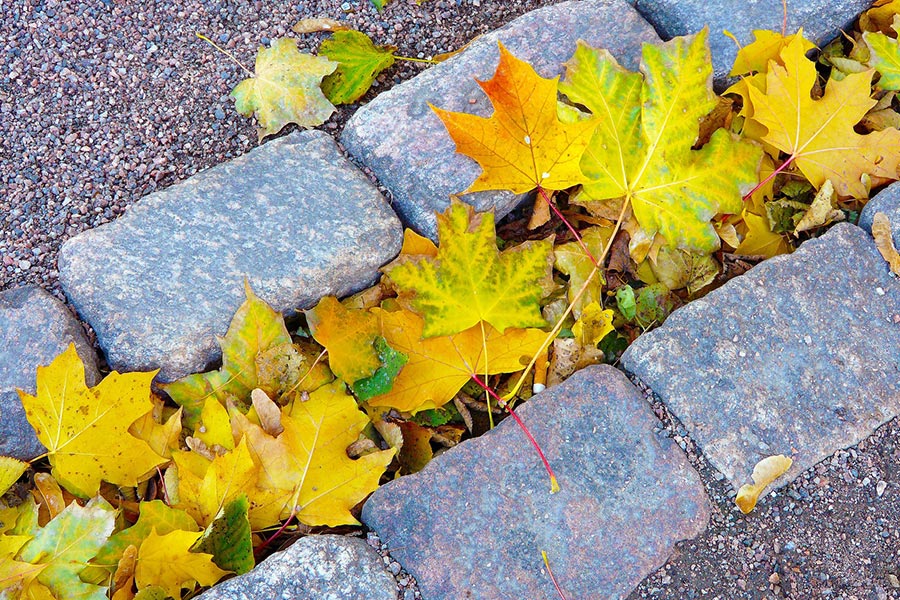Nearby attractions
周邊景點
Xuanzang Temple
From Riyue Village, go west along the road around the lake, Xuanzang Temple is at about the 4.8 km away mark. Xuanzang Temple is in the style of the Tang Dynasty, with green roofs, red pillars. The Chinese garden is simple, unpretentious, and quiet with grace and generosity. Sun Moon Lake in front and Qinglong Mountain in the back, the temple sits on a treasure land of what geographical surveyors would call “Blue Dragon Playing with Pearls”. The temple is the best resting place for the head bone relics (Śarīra) of Master Xuanzang. The Venerable Xuanzang Cultural Relics Memorial Hall was opened for worship on March 28, 2014.
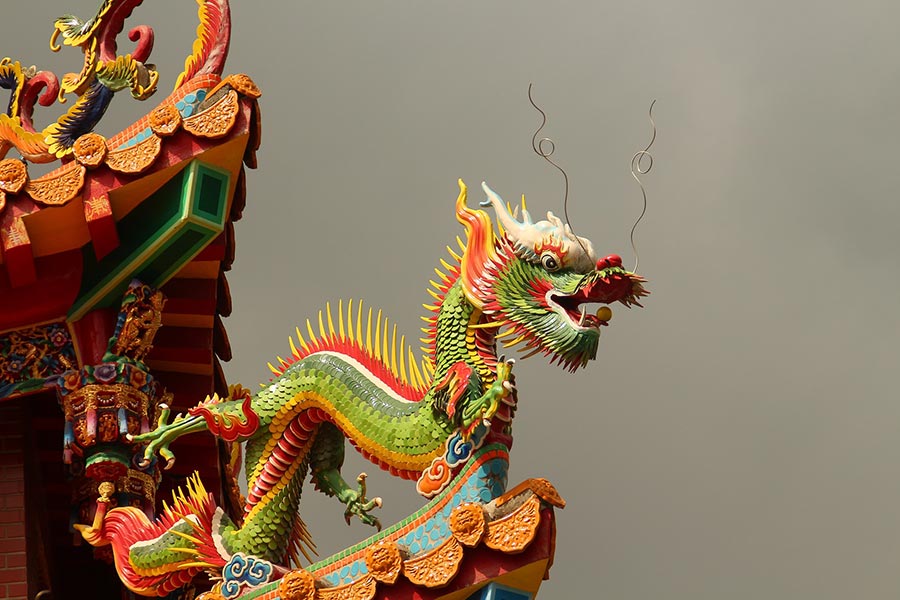
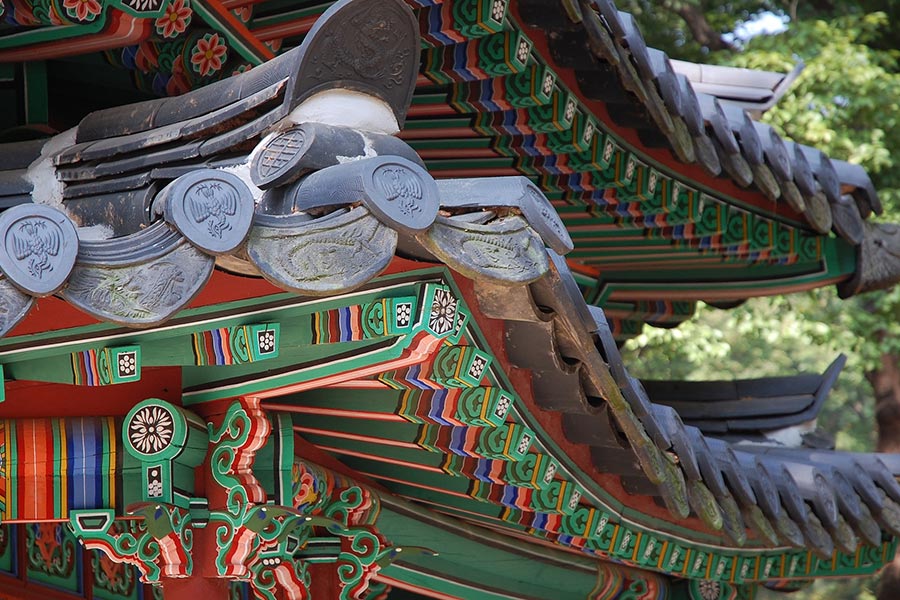
Ci’en Pagoda
Built in April 1971, it is located on the Shabalan Mountain (Erlong Mountain), 954 meters above sea level, and was built by former President Chiang Kai-Shek to commemorate his mother. The Ci’en Pagoda is about 46 meters high. During its construction, all the building materials were transported by boat through Moon Lake and then transported up the Shabalan Mountain using a stream cage, an extremely arduous process. The top of Ci’en Pagoda is 1,000 meters above sea level. Looking from its top floor towards La Lu Island, the pagoda, La Lu Island, and Xuanzang Temple are on the same axis, a line fondly referred to as the “Happiness Line”. The terrain in the area is like a dragon’s head sticking into a pool to draw water, with La Lu Island located at the water intake, Xuanzang Temple at the dragon’s head, and the Ci’en Pagoda at the heart of the dragon. It is very peculiar.
Wenwu Temple
Two temples were on the side of Sun Moon Lake during the Japanese occupation, the Dragon and Phoenix Temple in Shuishe Village and the Yihua Temple in Buji Village (today’s Moon Village). Later the Japanese power generation projects caused the water level of Sun Moon Lake to rise, so the two temples had to be moved. The electric company bought the temples, and the temple management used the money to build a new temple, thus merging the two original temples. The new temple was rebuilt in 1934 in Songbailun, on the north side of Sun Moon Lake, and the relocation was completed in 1938.
In 1969, Wenwu Temple was rebuilt again, this time in a Northern Dynasty style, with a grand scale and majesty. The temple is divided into three halls. The second floor of the front hall houses the Water Cloud Palace for the founding God, the Wenchang Emperor, and others. The middle hall is for Wusheng–the saints who were once legendary military leaders–such as Guan Shengdi and Yue Wumu, and the back hall houses the Dacheng Hall for Cofucius and so forth. Therefore, gods from Confucism, Buddhism, and Taoism gods are all worshiped in one place.
The Dacheng Hall of Wenwu Temple is the only Confucius temple in Taiwan that opens the middle door, which, according to the temple management, is purely for convenience. Because Wenwu Temple is located beside Sun Moon Lake, usually many tourists worship at the temple; in order to facilitate their entry and exit, they decided to open the middle gate. There is no other reason for that. The statue of Confucius in Dacheng Hall is cast in bronze. This is the only Confucius temple in Taiwan that enshrines icons. In addition to the Confucius icon, there are also Mencius and Zisizi statues. These three statues were originally enshrined in China, and, after being duplicated during the Boxer Rebellion in the late Qing Dynasty, they were moved to Wenwu Temple. As for the statues of Yanzi and Zengzi, they were subsequently paid for by their descendants, and these two statues are now there to forever accompany Confucius.
The two huge vermilion stone lions on either side of the square in front of Wenwu Temple are also the focus of tourists’ attention. That pair of stone lions were donated by Wu Huoshi, the founder of Shin Kong Group, so the local people used to jokingly call the pair of stone lions “Wu Huoshi”. The back of Wenwu Temple faces the lake. The majestic terrain and beautiful scenery have become the center of faith of residents nearby who worship at the temple in large numbers. At the observation deck in the back, you can overlook Sun Moon Lake in the distance. This vast view seems big enough to embrace the world.
(Source of images and text: Sun Moon Lake Tourism Network)
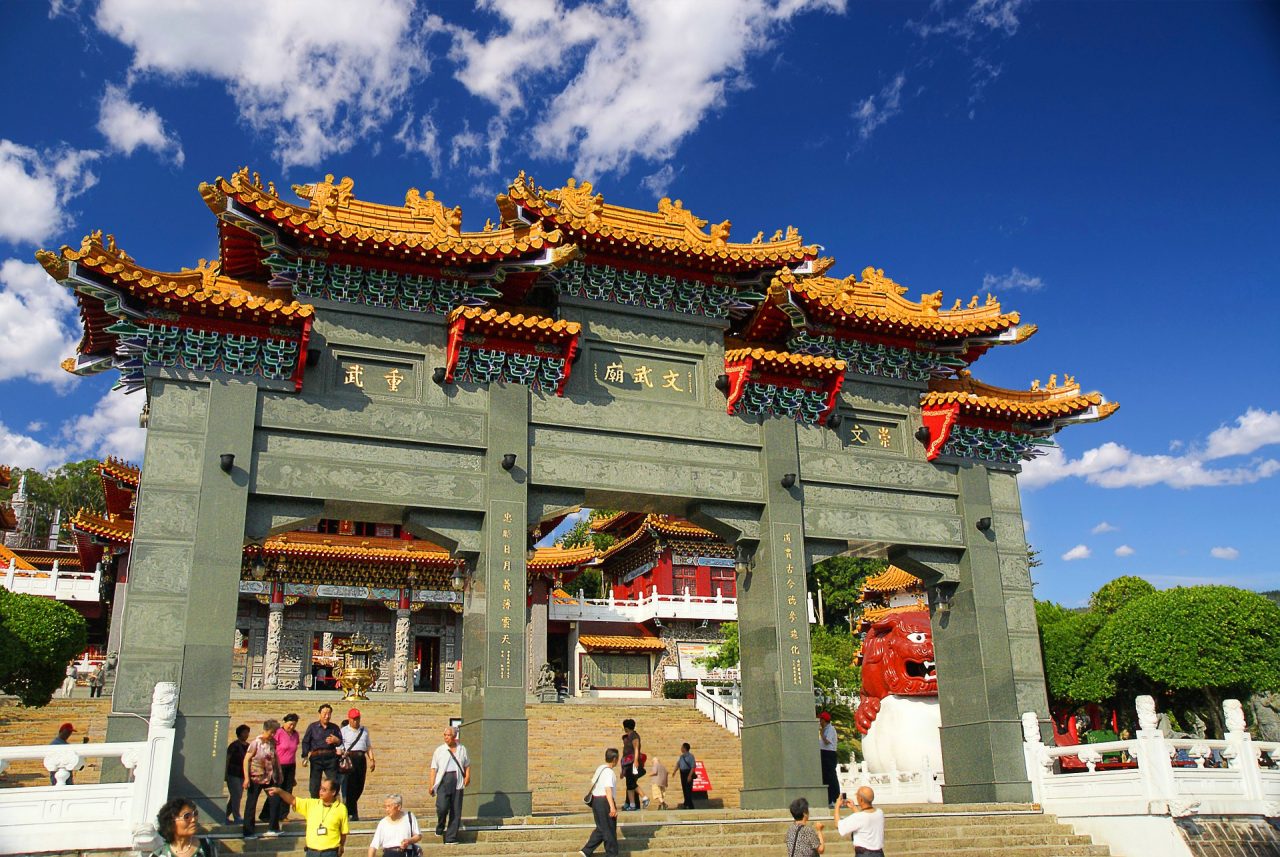
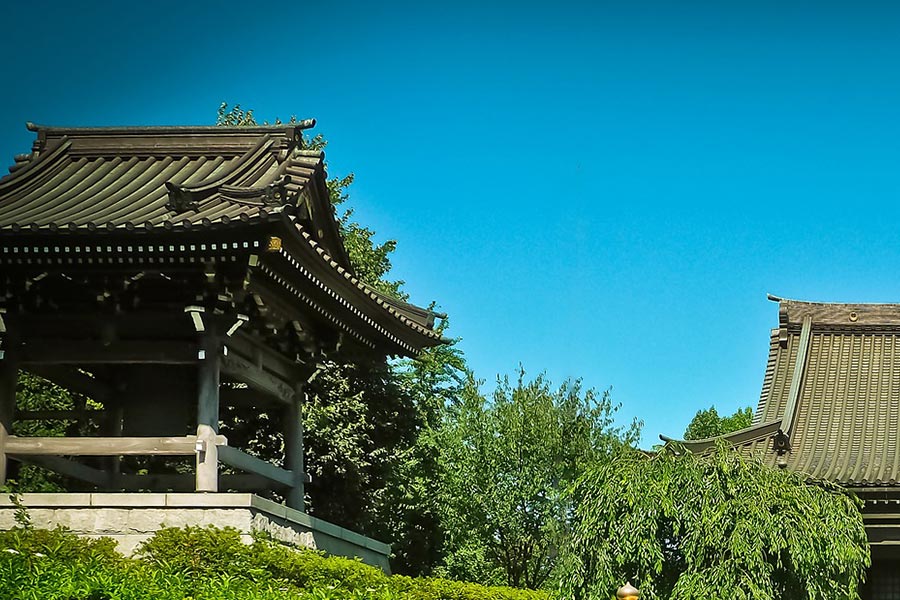
Xuanguang Temple
During the Second Sino-Japanese War, the Japanese took away Master Xuanzang’s parietal bone relic in Nanjing, part of which they gave to the Buddhist Association of the Republic of China after the war. The spirit bone was taken to Taiwan in 1955 and enshrined at Xuanguang Temple on the bank of Sun Moon Lake in 1958.
Xuanguang Temple is barely ten meters away from the lake. There is a pier under the temple, so tourists can take a boat to the pier, and then walk up the steps to visit the temple. The golden body of Master Xuanzang is enshrined in the temple, and a plaque of “Grandmaster of Our People” hangs overhead. Although Master Xuanzang’s parietal bone relic was transferred to Xuanzang Temple, Xuanguang Temple has become a must-visit attraction for tourists visiting Sun Moon Lake because of its easy access by boat.
Xuanguang Temple was built in the Tang Dynasty style. Because originally the plan was to use this temple to temporarily enshrine the parietal bone relic of Master Xuanzang, there are no green roofs or red pillars. making it look simple and elegant but still evoking nostalgia in tourists. And because it is built near the lake, you can enjoy the beautiful water of Sun Moon Lake nearby, as if you were in a beautiful painting scene.
There is a large stone in front of the temple with “Sun Moon Lake” and ” Xuanguang Genkwang Temple” engraved on it, making it a popular attraction trataction for taking photos. On holidays, the cue of the crowd waiting to take pictures often encircles the small temple several times. This scene itself is an interesting picture.
(Data source:Sun Moon Lake Tourism Network)
Xiangshan Administration and Visitor Center
This center was actually an award-winning entry in the “Landscape Series” project competition hosted in 2013 by the Tourism Bureau. The entry presented an idea to develop the mountain area in such a way as to be in harmony with the shape of Sun Moon Lake’s fjord. The center serves both as a visitor center and a scenic area.
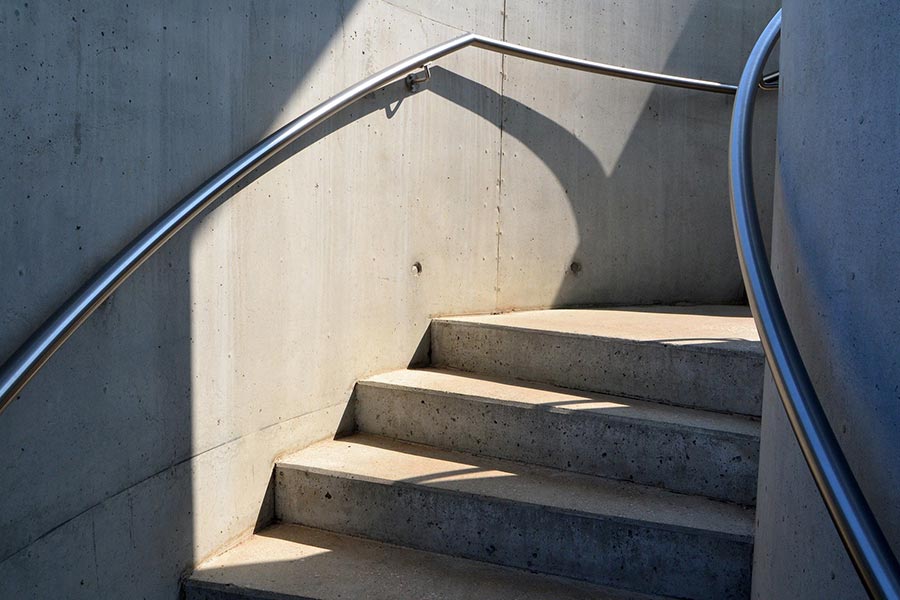
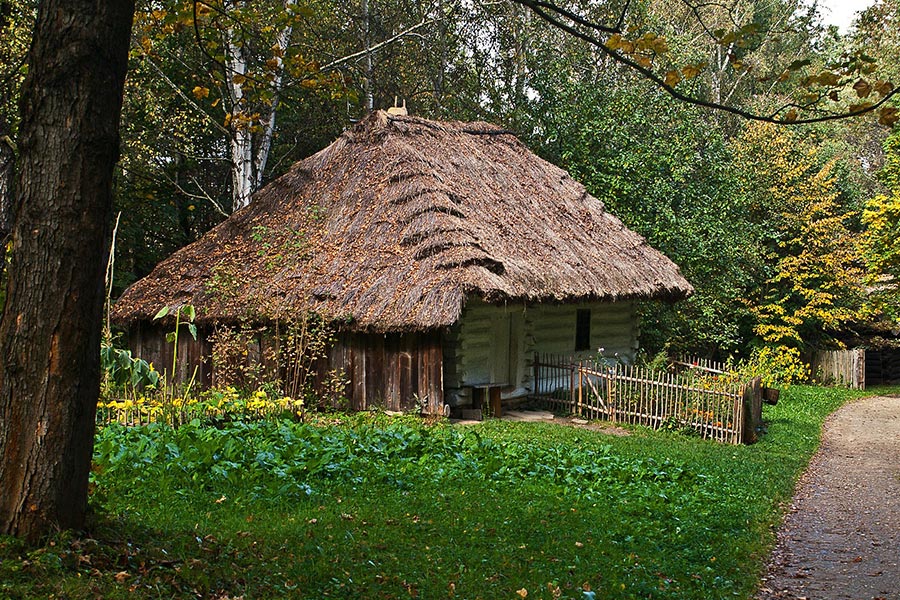
Formosan Aboriginal Culture Village
Located in Yuchi Township in Nantou County, Formosan Aboriginal Culture Village, covering an area of about 62 hectares, is close to the famous Sun Moon Lake, allowing you to freely enjoy the Sun Moon Lake scenic area and other attractions. Formosan Aboriginal Culture Village has a very diverse overall planning, and there are shows, performances of traditional song and dance that form attractions combining cultural tourism, recreation, and education. Formosan Aboriginal Culture Village is more focused on the theme of aboriginal culture village, and this most innovative amusement facility allows the public to have great fun!
La Lu Island
La Lu Island, located in the middle of Sun Moon Lake, was originally the sacred place of the Shao ancestral spirit. But an earthquake caused serious damage to La Lu Island, and the county government worked hard to develop and rebuild, integrating the Shao culture and art into it.
Before this small island in Sun Moon Lake was called Kwanghwa Island, it had several other different names in different eras and backgrounds. The Japanese called it “Tamashima”; the Han people at the edge of the lake called it “Zhuzai Mountain”; foreigners in the late Qing Dynasty called it “Pearl island”; In Qing Dynasty documents, it was called “Zhuyu”, “Zhushan”, and “Zhuzai Mountain”. Whether pearl or jade, mountains, or islands, the names were all based on its shapes or situations. But the original owner of Sun Moon Lake, the Shao people, named it “Lalu”. It is the base of the original mother society “Shuishe” of the early Shao people. Lalu is pronounced similarly to how the Shao people pronounce “true and unmistakable”. This shows the mainstream and lofty status of La Lu Island in the history of the Shao people.
La Lu Island still holds its sacred and symbolic significance even today. For example, the Shao people believe that their supreme ancestor spirit resides in Lalu. According to tradition, all women who want to learn to be “Mr. Ma” (the Shao people’s name for a traditional priest), must be accompanied by a senior “Mr. Ma” on a boat to La Lu Island, to feel the revelation of the supreme ancestor spirit. Only after receiving the consent can they be considered as bona fide priests.
